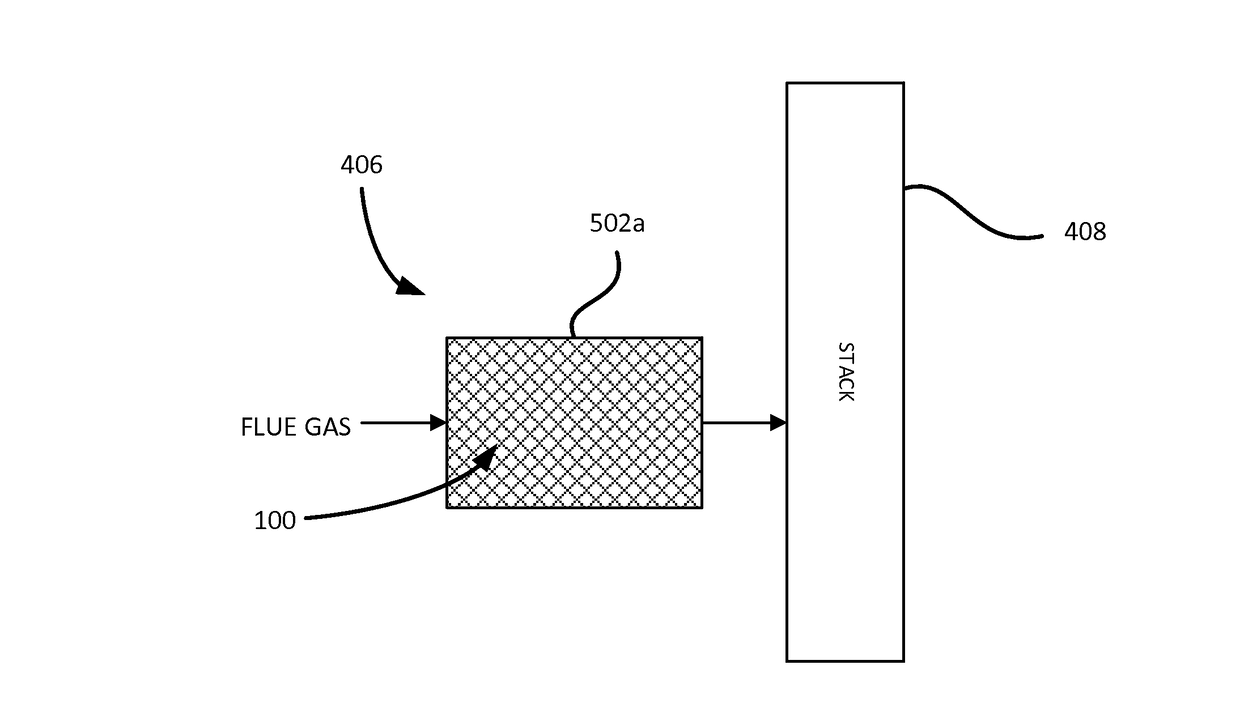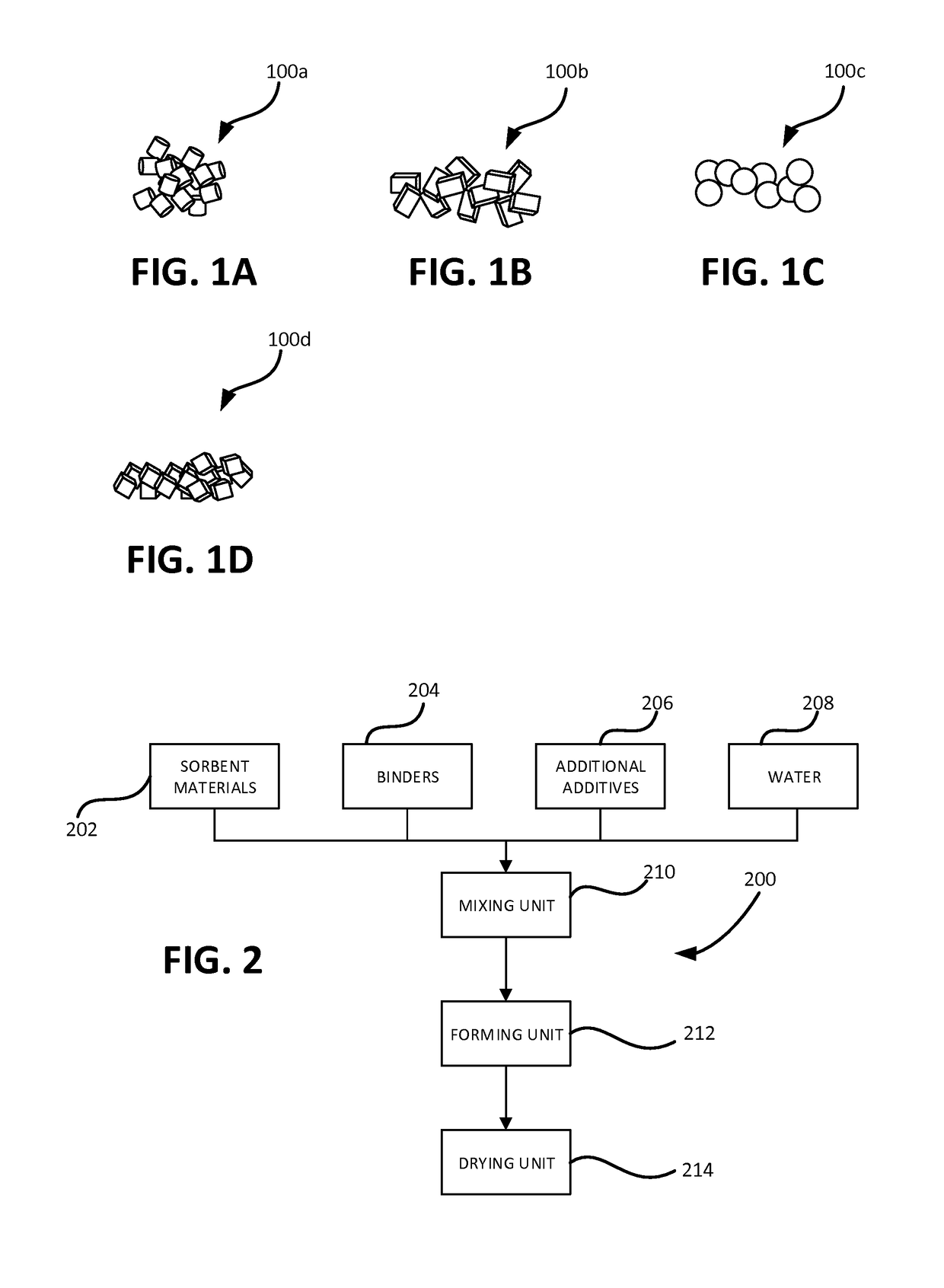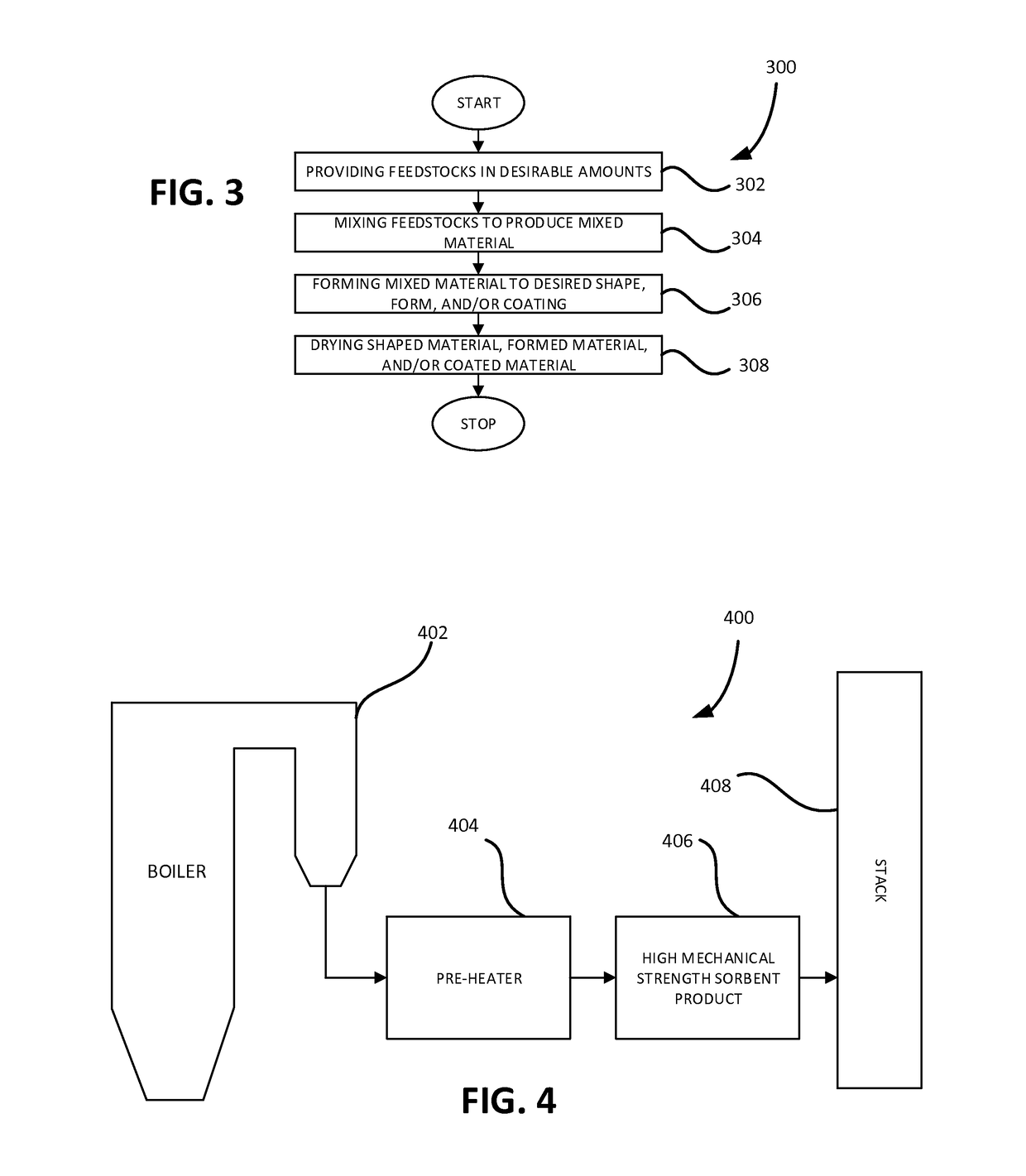High mechanical strength sorbent product, system, and method for controlling multiple pollutants from process gas
a technology of process gas and sorbent product, which is applied in the direction of other chemical processes, separation processes, silicon compounds, etc., can solve the problems of high temperature processing, high energy consumption, and emitted hazardous air pollutants during production, so as to improve multipollutant treatment capacity, reduce production costs, and high strength
- Summary
- Abstract
- Description
- Claims
- Application Information
AI Technical Summary
Benefits of technology
Problems solved by technology
Method used
Image
Examples
example 1
[0061]A high mechanical strength sorbent product was made as follows: blending a powdered activated carbon with initial surface area of 750 m2 / g, average pore size of 22 Å, and 27% mesopore fraction as 42 wt. % of the formula with 11 wt. % bentonite and 4 wt. % iron oxide. Adding a 40 wt. % solution of colloidal silica as 19 wt. % of the formula and water constituting 24 wt. % of the formula, and then mixing for 5 minutes. Forming said mixture into 9 mm diameter cylindrical pellets through extrusion with a 6 hole, 2 inch dye and cutting the extruding material to produce pellets with 10 mm approximate length. Drying extruded pellets at a temperature of 110° C. to a moisture content of less than 3%. The resulting sorbent product 100 (Experiment 1 in Table 1) had a Roga index of 95%, SO2 adsorption capacity of 90 mg / g, and deNOx efficiency of 17%.
example 2
[0062]A high mechanical strength sorbent product was made as follows: blending a powdered activated carbon with initial surface area of 220 m2 / g, average pore size of 32 Å, and 55% mesopore fraction as 42 wt. % of the formula with 14 wt. % lime kiln dust. Adding a 40 wt. % solution of colloidal silica as 18 wt. % of the formula and water constituting 26 wt. % of the formula, and then mixing for 5 minutes. Forming said mixture into 9 mm diameter cylindrical pellets through extrusion with a 6 hole, 2 inch dye and cutting the extruding material to produce pellets with 10 mm approximate length. Drying extruded pellets at a temperature of 110° C. to a moisture content of less than 3%. The resulting sorbent product 100 (Experiment 2 in Table 1) had a Roga index of 93%, SO2 adsorption capacity of 14 mg / g, and deNOx efficiency of 7%. This sorbent product exhibits lower SO2 adsorption capacity and deNOx efficiency than the sorbent product in Example 1 due to the use of a base sorbent materia...
example 3
[0063]A sorbent product with low mechanical strength was made as follows: blending a powdered activated carbon with initial surface area of 570 m2 / g, average pore size of 20 Å, and 20% mesopore fraction as 50 wt. % of the formula with 10 wt. % bentonite. Adding water constituting 40 wt. % of the formula, and then mixing for 5 minutes. Forming said mixture into 9 mm diameter cylindrical pellets through extrusion with a 6 hole, 2 inch dye and cutting the extruding material to produce pellets with 10 mm approximate length. Drying extruded pellets at a temperature of 110° C. to a moisture content of less than 3%. The resulting sorbent product 100 (Experiment 3 in Table 1) had a Roga index of 85%, thus producing insufficient mechanical strength due to lack of high temperature treatment as described in the prior art for shaped activated carbon pellets with clay binders.
PUM
| Property | Measurement | Unit |
|---|---|---|
| temperatures | aaaaa | aaaaa |
| temperature | aaaaa | aaaaa |
| wt % | aaaaa | aaaaa |
Abstract
Description
Claims
Application Information
 Login to View More
Login to View More - R&D
- Intellectual Property
- Life Sciences
- Materials
- Tech Scout
- Unparalleled Data Quality
- Higher Quality Content
- 60% Fewer Hallucinations
Browse by: Latest US Patents, China's latest patents, Technical Efficacy Thesaurus, Application Domain, Technology Topic, Popular Technical Reports.
© 2025 PatSnap. All rights reserved.Legal|Privacy policy|Modern Slavery Act Transparency Statement|Sitemap|About US| Contact US: help@patsnap.com



